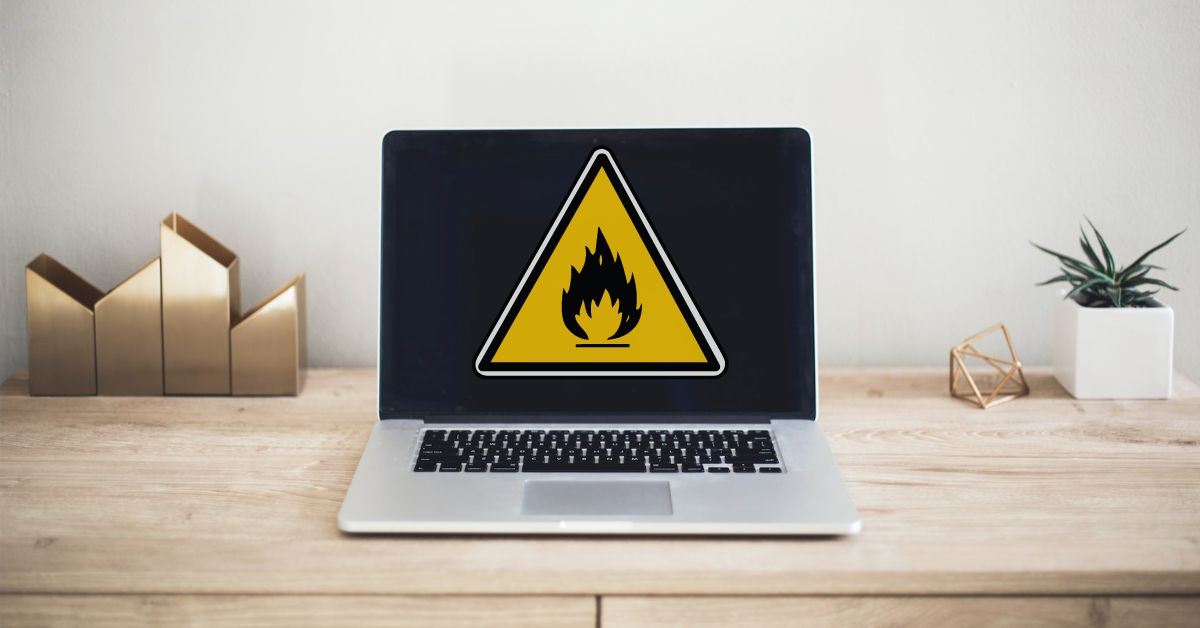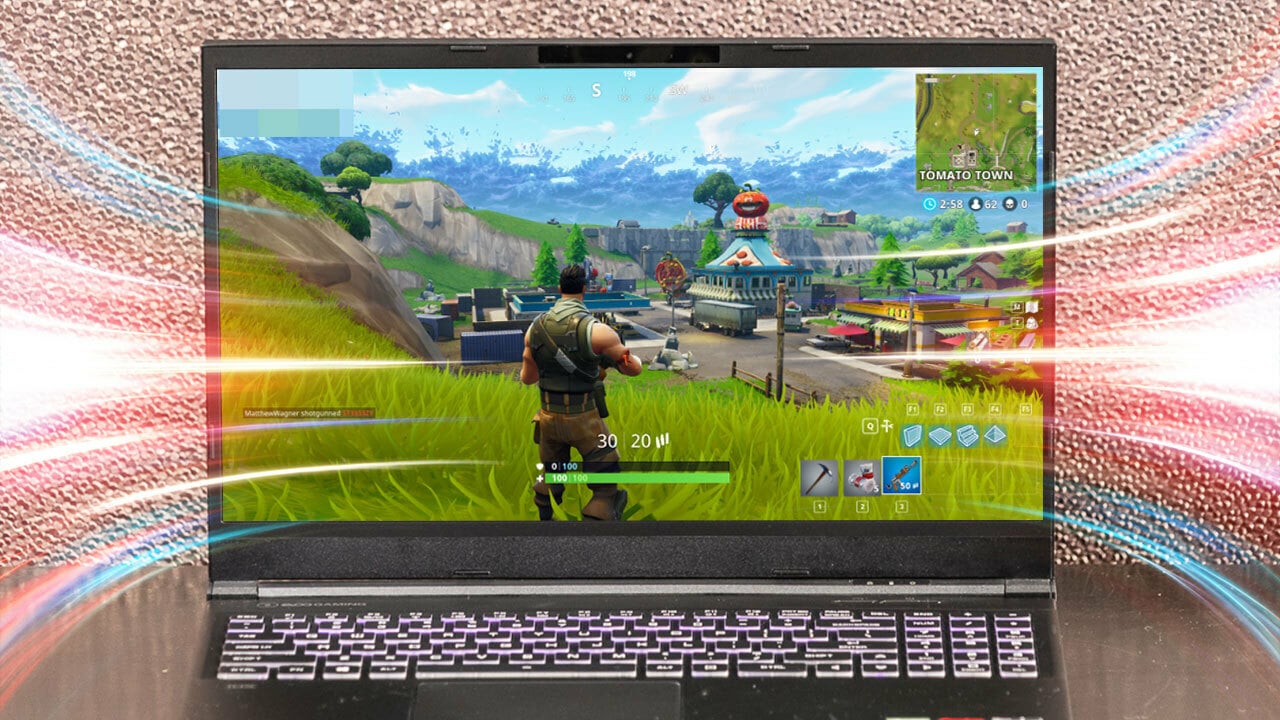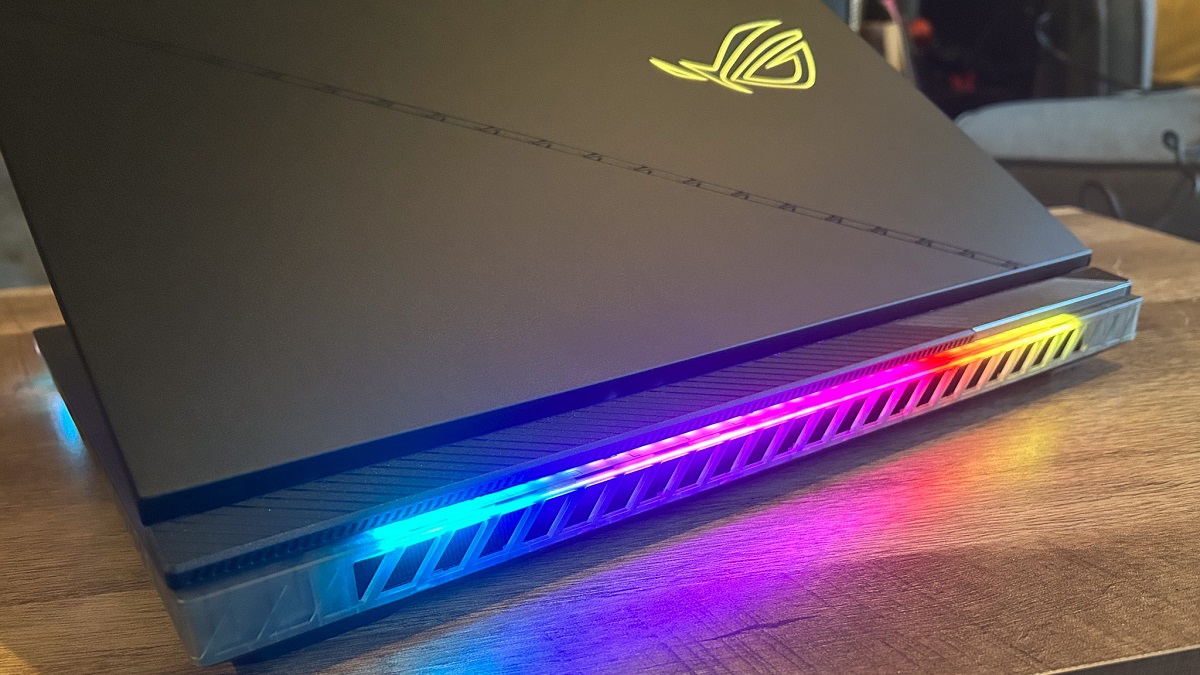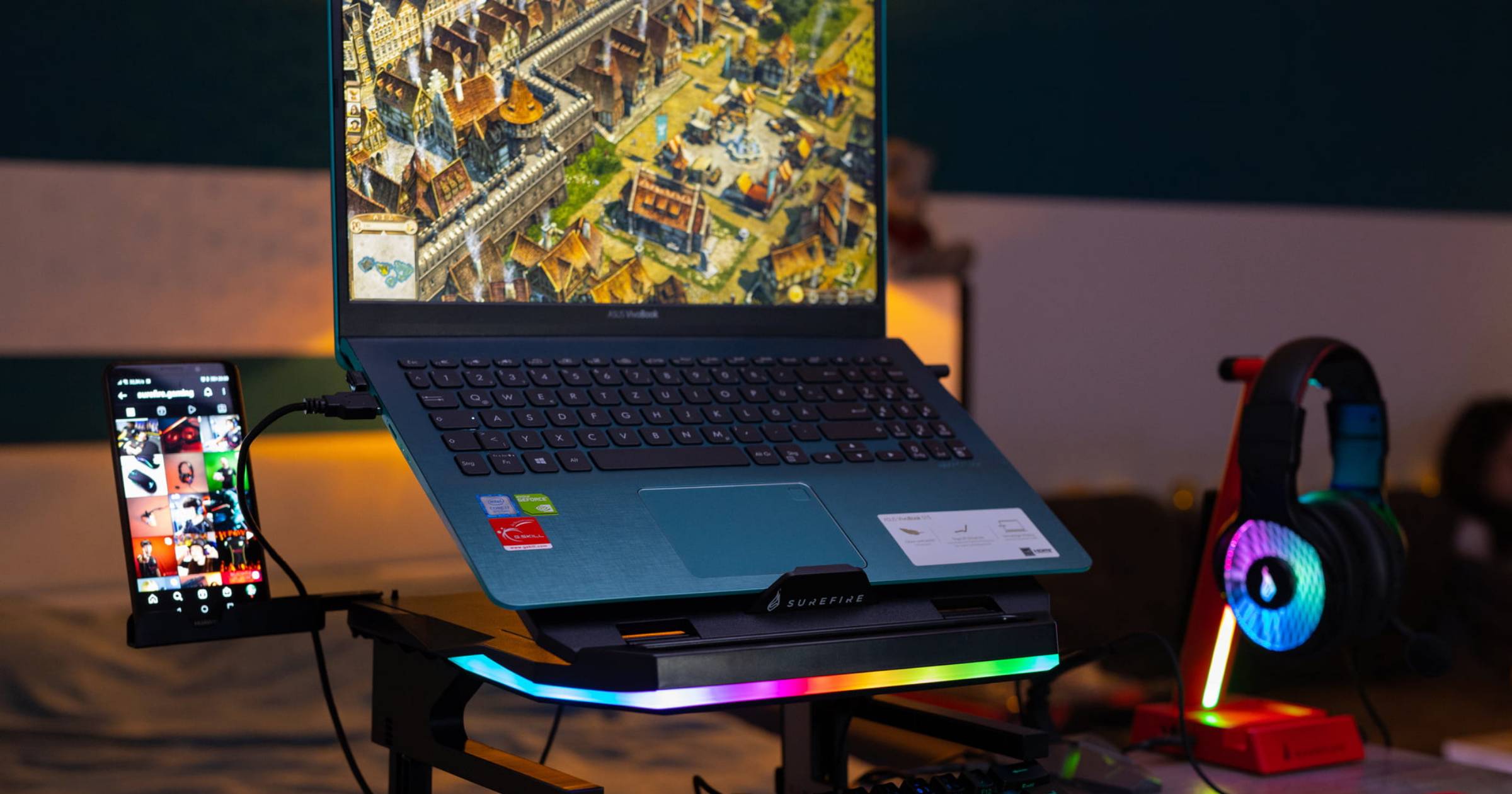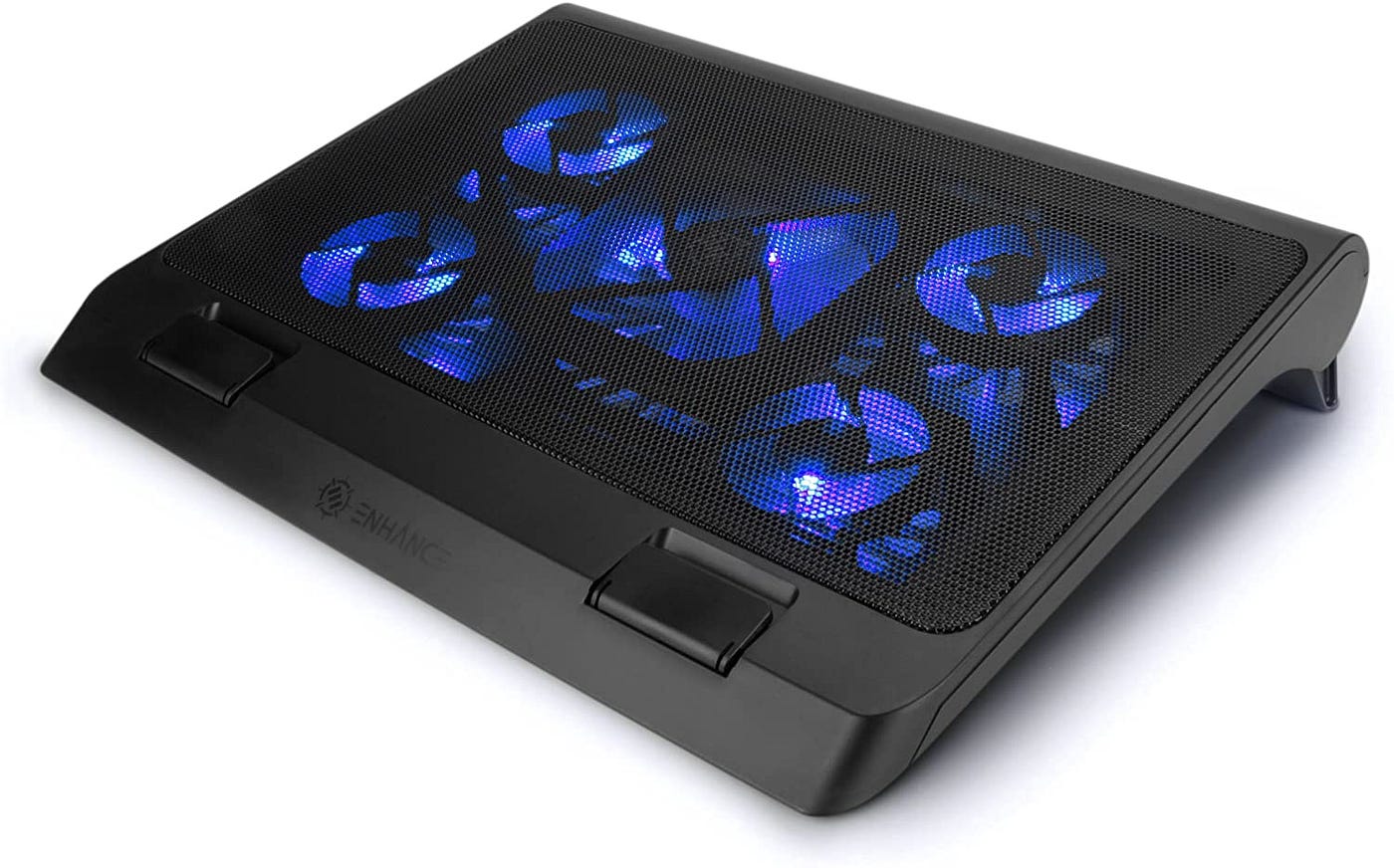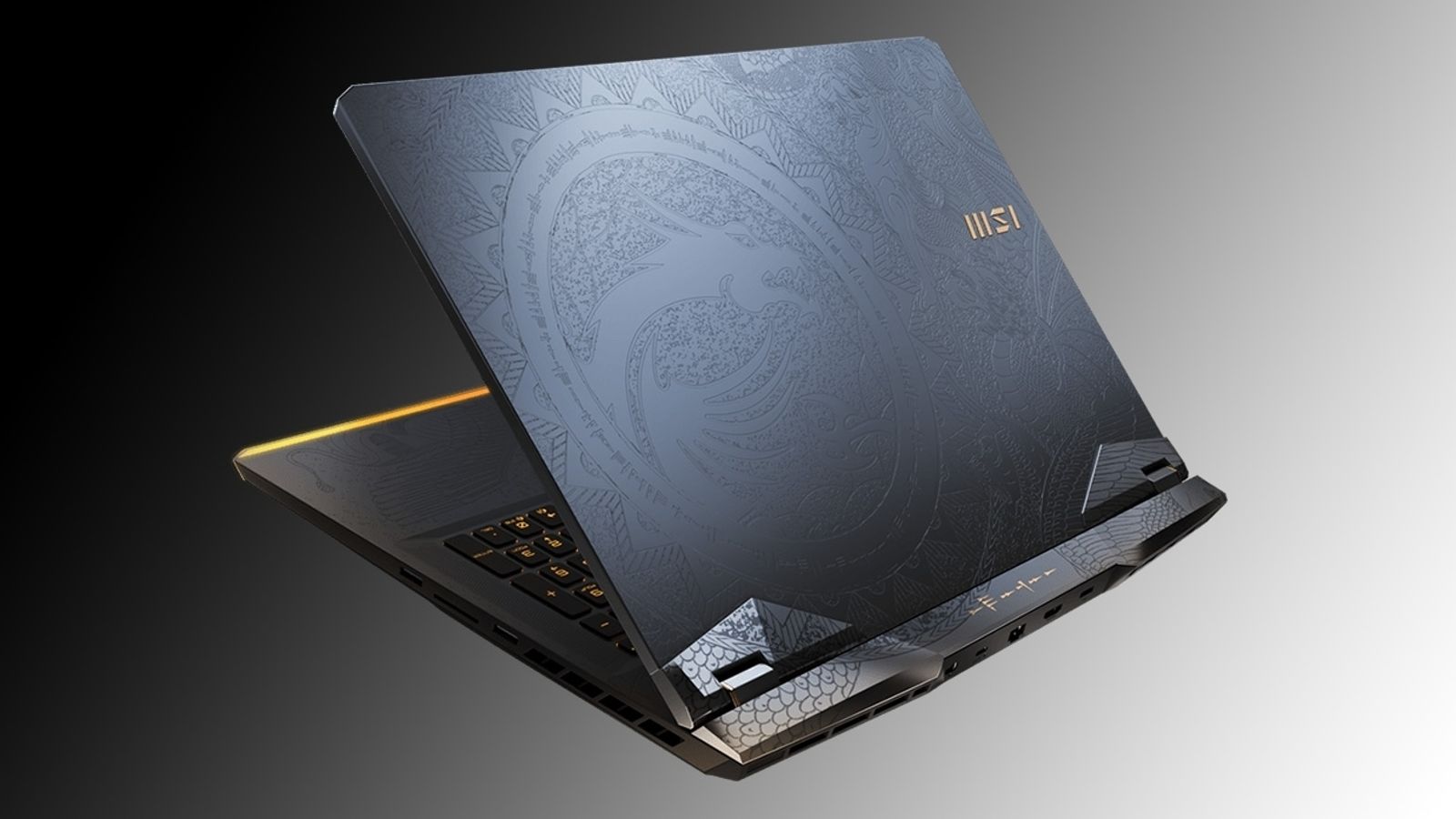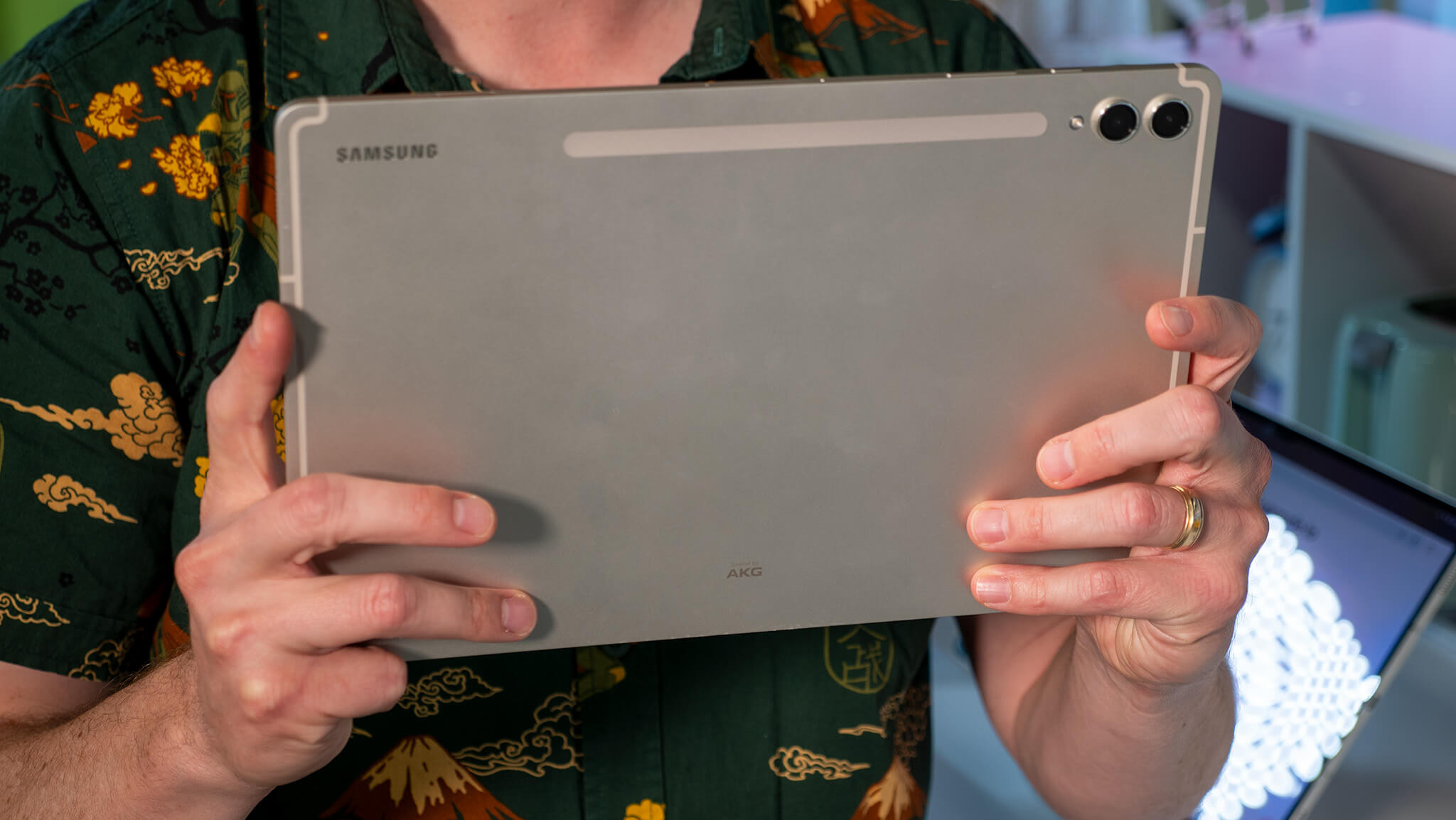Introduction
Welcome to the world of gaming, where high-powered laptops provide the perfect platform to immerse yourself in breathtaking virtual realities. But as the saying goes, “with great power comes great responsibility,” and this couldn’t be truer when it comes to gaming laptops. One of the biggest challenges faced by gamers is dealing with overheating issues that can hinder performance and potentially damage the laptop.
Overheating is a common problem for gaming laptops due to their powerful hardware and intensive usage. The stress placed on the CPU and GPU during high-demand gaming sessions generates immense heat, which, if not properly managed, can lead to performance throttling, unexpected shutdowns, and even long-term damage.
This article aims to help you understand the causes of laptop overheating and provides practical tips on preventing it. By implementing these measures, you can ensure that your gaming laptop runs at optimal temperatures, allowing you to enjoy smoother gameplay and prolonging the lifespan of your precious gadget.
So, let’s dive in and explore the solutions to keep your gaming laptop cool and prevent those dreaded overheating issues.
Understanding the Causes of Laptop Overheating
Before we delve into the solutions, it’s important to understand the factors that contribute to laptop overheating. By gaining insight into these causes, you can better prevent and address the issue.
1. Dust and Dirt Buildup: Over time, dust and dirt accumulate in the cooling system, obstructing the airflow needed to dissipate heat. This buildup can lead to elevated temperatures and decreased cooling efficiency.
2. Inadequate Cooling System Design: Some gaming laptops may have subpar cooling system designs that fail to effectively keep heat in check. This can result in poor ventilation and limited airflow, leading to overheating.
3. Overclocked Components: Overclocking is a practice where users increase the clock speed of their laptop’s CPU and GPU to achieve higher performance. However, overclocking generates more heat, putting additional strain on cooling systems and increasing the risk of overheating.
4. Insufficient Thermal Paste: Thermal paste is used to facilitate heat transfer between the CPU/GPU and the cooling system. If this paste is improperly applied or wears out over time, it can create a barrier that hinders efficient heat dissipation.
5. Ambient Temperature: The ambient temperature of the environment in which you use your laptop plays a role in its overall temperature. Hot weather or operating the laptop in warm rooms can contribute to higher temperatures and potential overheating.
Understanding these causes is crucial in tackling the problem of laptop overheating. In the following sections, we will explore effective strategies to prevent and combat this issue. By addressing the root causes and implementing the right solutions, you can maintain optimal performance and extend the lifespan of your gaming laptop.
Cleaning Your Laptop’s Cooling System
One of the most common causes of laptop overheating is the accumulation of dust and dirt in the cooling system. Over time, these particles can clog the vents and obstruct the airflow, leading to reduced cooling efficiency and increased temperatures. Regularly cleaning your laptop’s cooling system is an essential step in preventing overheating issues. Here’s how to do it:
1. Shut down your laptop and unplug it from the power source. It’s important to ensure that the laptop is completely powered off before proceeding with any cleaning.
2. Use a small, clean brush or compressed air to carefully remove the dust and dirt from the vents. Gently brush the surface around the vents and use the compressed air to blow away any stubborn particles.
3. If the vents are accessible, use a cotton swab dipped in isopropyl alcohol to clean them. This helps remove any stubborn dirt or residue that may be stuck in the vents.
4. For a more thorough cleaning, you can open up the laptop’s case. However, it’s important to note that this may void your warranty, so proceed with caution. If you’re not comfortable doing this yourself, it’s best to seek professional help.
5. Once the case is open, use compressed air to carefully blow away dust and debris from the internal components, such as the fan and heat sink. Make sure to keep a distance and avoid direct contact with the components.
6. After cleaning, reassemble the laptop and ensure that all screws are tightened properly. Double-check that everything is securely in place before powering it back on.
Regularly cleaning your laptop’s cooling system, ideally every few months or as needed, will help maintain proper airflow and prevent excessive heat buildup. By keeping the vents and internal components clean, you can significantly reduce the risk of overheating and extend the lifespan of your gaming laptop.
Using a Laptop Cooling Pad
If you’re facing persistent overheating issues with your gaming laptop, investing in a laptop cooling pad can be a game-changer. A cooling pad is a portable cooling solution that provides extra airflow to your laptop, helping to dissipate heat more effectively. Here’s how using a laptop cooling pad can help prevent overheating:
1. Improved Airflow: Laptop cooling pads are designed with built-in fans or elevated surfaces that promote better airflow. By placing your laptop on the cooling pad, you create additional space underneath, allowing air to circulate more freely around the device.
2. Ergonomic Benefits: Many laptop cooling pads feature ergonomic designs that elevate your laptop to a more comfortable viewing angle. This not only reduces strain on your neck and wrists but also helps in creating additional space for air circulation.
3. Effective Heat Dissipation: Cooling pads with built-in fans provide direct airflow to the underside of your laptop. These fans draw heat away from the internal components, ensuring that they stay cool during intense gaming sessions.
4. Portability: Laptop cooling pads are lightweight and portable, making them convenient for on-the-go gamers. Whether you’re gaming at home, in a café, or at a friend’s place, you can easily carry and use a cooling pad to keep your laptop cool and prevent overheating.
When using a laptop cooling pad, make sure to follow these tips:
– Place the cooling pad on a hard, flat surface for optimal stability.
– Ensure that the cooling pad is positioned directly underneath the laptop’s vents for maximum airflow.
– Keep the fans of the cooling pad clean and free from dust to maintain their effectiveness.
– Adjust the fan speed settings on the cooling pad according to your laptop’s temperature and cooling needs.
By incorporating a laptop cooling pad into your gaming setup, you can significantly enhance your laptop’s cooling capabilities and prevent overheating. This investment not only improves performance but also helps prolong the lifespan of your gaming laptop.
Optimizing Your Laptop’s Performance Settings
Adjusting your laptop’s performance settings can have a significant impact on heat generation and overall temperature. By optimizing these settings, you can strike a balance between performance and temperature, reducing the risk of overheating. Here are some tips to help you optimize your laptop’s performance settings:
1. Power Plan Settings: Windows laptops offer different power plans, such as Balanced, Power Saver, and High Performance. Switching to the Balanced or Power Saver power plan can help reduce the CPU’s power consumption, resulting in lower heat generation.
2. CPU Power Management: Adjusting the CPU power management settings can further optimize your laptop’s performance. Access the advanced power options in the Control Panel and modify the maximum processor state to ensure that the CPU doesn’t run at full power all the time.
3. Graphics Performance: If your laptop has a dedicated graphics card, you can adjust its performance settings. Open the graphics control panel, such as NVIDIA Control Panel or AMD Radeon Settings, and lower the graphics card’s power settings to reduce heat generation.
4. Manage Background Processes: Close unnecessary programs and disable unnecessary startup applications. Every running process consumes system resources and generates heat. By minimizing the number of background processes, you can reduce the stress on your laptop’s hardware and lower temperatures.
5. Undervolting: Undervolting is the process of reducing the voltage supplied to the CPU. This can be done through specialized software or the BIOS settings. Undervolting helps to lower power consumption and heat generation while maintaining stable performance. However, this process should be done with caution, as incorrect settings can lead to system instability.
It’s important to note that while optimizing performance settings can help in reducing heat generation, it may also impact the performance of your laptop. Finding the right balance between performance and temperature is key. Monitor your laptop’s temperatures using software like HWMonitor or Core Temp to ensure that the adjustments are effective and don’t push your laptop beyond safe temperature limits.
By optimizing your laptop’s performance settings, you can prevent excessive heat buildup and minimize the risk of overheating. These adjustments not only help in maintaining the temperature of your laptop but also contribute to an improved gaming experience.
Updating Your Laptop’s Graphics Drivers
Outdated graphics drivers can often be a culprit behind laptop overheating. Graphics drivers play a crucial role in managing the performance and temperature of your laptop’s graphics card. By keeping them up to date, you can ensure that your graphics card operates efficiently and doesn’t generate unnecessary heat. Here’s why updating your laptop’s graphics drivers is important:
1. Performance Optimization: Graphics driver updates often come with performance improvements and bug fixes. These updates can optimize how your laptop’s graphics card functions, allowing it to operate more efficiently and generate less heat during gaming or graphic-intensive tasks.
2. Compatibility Enhancements: Newer games and software releases may require specific graphics driver versions to run smoothly. By updating your graphics drivers, you ensure that your laptop is compatible with the latest games and software, reducing the chances of any performance issues and subsequent overheating.
3. Stability and Bug Fixes: Outdated graphics drivers may have bugs or stability issues that can lead to overheating problems. Updating your drivers will address these bugs and provide a more stable performance, minimizing the risk of overheating caused by software-related issues.
Updating your graphics drivers is a relatively straightforward process. Here’s how you can update them:
1. Identify Your Graphics Card: Determine the model and manufacturer of your laptop’s graphics card. You can find this information in the Device Manager or by using specialized software like CPU-Z or GPU-Z.
2. Visit the Manufacturer’s Website: Go to the website of the graphics card manufacturer, such as NVIDIA or AMD. Navigate to the Downloads or Drivers section and search for the appropriate driver for your graphics card model and operating system.
3. Download and Install the Latest Driver: Download the latest driver version compatible with your graphics card and operating system. Follow the installation instructions provided by the manufacturer, which typically involve running an executable file or an installer package.
4. Restart Your Laptop: After the driver installation is complete, restart your laptop to apply the changes and ensure that the new driver is properly initialized.
Remember to periodically check for driver updates and install them as they become available. This ensures that your laptop’s graphics card is consistently optimized and capable of delivering optimal performance while maintaining lower temperatures.
By keeping your graphics drivers up to date, you can help prevent overheating issues and ensure smooth performance during gaming sessions or graphic-intensive tasks.
Managing and Closing Unnecessary Programs
Running multiple programs simultaneously can put a strain on your laptop’s hardware, resulting in increased heat generation and potential overheating. By managing and closing unnecessary programs, you can minimize the workload on your laptop’s CPU and GPU, allowing them to operate more efficiently and at lower temperatures. Here are some tips to help you manage and close unnecessary programs:
1. Task Manager: Open the Task Manager by right-clicking on the taskbar and selecting “Task Manager” or by pressing Ctrl+Shift+Esc. In the Task Manager, go to the “Processes” or “Details” tab (depending on your Windows version) to see a list of running programs and their resource usage. Identify resource-intensive programs that you can close without affecting your current tasks.
2. Startup Programs: Some programs automatically launch on startup and continue running in the background, consuming valuable system resources. Use the Task Manager’s “Startup” tab to manage and disable programs that you don’t need to start with your laptop. Disabling unnecessary startup programs helps reduce the overall workload, leading to lower temperatures.
3. Background Apps: Many applications run in the background even when you’re not actively using them. These background apps can generate unnecessary heat and consume system resources. To manage background apps, go to the Windows Settings and click on “Privacy” and then “Background Apps.” Disable apps that you don’t need running in the background.
4. Browser Tabs and Extensions: If you’re using a web browser while gaming, minimize the number of open tabs. Each tab consumes memory and CPU resources, contributing to heat generation. Additionally, consider disabling or removing unnecessary browser extensions, as they can also utilize system resources and impact performance.
By closing unnecessary programs, you reduce the overall workload on your laptop’s hardware. This allows the CPU and GPU to operate with less strain, resulting in lower temperatures and decreased risk of overheating.
It’s important to note that some programs may run essential background processes, such as antivirus software or system drivers. Avoid closing any programs that are critical for the proper functioning of your laptop.
Regularly managing and closing unnecessary programs can help improve the performance and temperature control of your gaming laptop. By optimizing your system’s resource usage, you’ll be able to enjoy smoother gameplay without worrying about overheating issues.
Monitoring Your Laptop’s Temperature
Monitoring your laptop’s temperature is crucial in identifying potential overheating issues and taking immediate action to prevent any damage or performance degradation. By keeping an eye on the temperature, you can proactively manage heat levels and maintain optimal performance. Here’s how you can monitor your laptop’s temperature:
1. Software Monitoring Tools: There are several third-party software programs available that can measure and display your laptop’s temperature in real-time. Some popular options include HWMonitor, Core Temp, and SpeedFan. These tools provide detailed temperature readings for various components like the CPU, GPU, and hard drive.
2. BIOS/UEFI: Many laptops offer temperature monitoring features within the BIOS or UEFI settings. Accessing this information usually involves entering the BIOS or UEFI interface during system startup. Consult your laptop’s manual or manufacturer’s website for guidance on accessing and interpreting temperature data in the BIOS/UEFI.
3. GPU Manufacturer Software: If your laptop has a dedicated GPU, such as NVIDIA or AMD, the respective manufacturer’s software (NVIDIA Control Panel or AMD Radeon Settings) usually provides temperature monitoring capabilities. These tools allow you to monitor the temperature of your GPU and adjust performance settings accordingly.
4. Hardware Monitoring Buttons: Some gaming laptops come equipped with dedicated hardware buttons or keys that display temperature information on the laptop’s built-in display. These buttons can provide a quick and convenient way to monitor temperature on the go.
When monitoring your laptop’s temperature, keep the following guidelines in mind:
– Monitor temperatures during intensive tasks like gaming or running demanding software to assess how your laptop handles the heat.
– Familiarize yourself with the normal temperature range for your laptop’s components. Excessive heat could be an indication of an underlying problem.
– Be cautious of temperature spikes and prolonged high temperatures that could lead to thermal throttling or overheating.
– Regularly clean the cooling system and ensure proper airflow to prevent temperature buildup.
By actively monitoring your laptop’s temperature, you can address potential overheating issues promptly. If you notice consistently high temperatures or abnormal spikes, consider implementing additional cooling measures or seeking professional assistance to resolve the issue.
Remember, prevention is key when it comes to laptop overheating, and regular temperature monitoring is an essential part of maintaining a cool and trouble-free gaming experience.
Elevating Your Laptop for Better Airflow
Elevating your laptop can be a simple yet effective way to improve airflow and aid in preventing overheating. When your laptop sits flat on a surface, such as a desk or table, the airflow underneath becomes restricted, hindering the cooling process. By elevating your laptop, you can promote better airflow and optimize heat dissipation. Here are some methods to elevate your laptop for better airflow:
1. Laptop Cooling Stands: Laptop cooling stands are specially designed to elevate your laptop at an angle, creating an open space underneath. These stands often have built-in fans that further aid in cooling. Choose a cooling stand that is suitable for your laptop’s size and weight, ensuring a stable and secure platform.
2. DIY Solutions: If you prefer a more cost-effective approach, you can use everyday objects to elevate your laptop. For example, you can place your laptop on a stack of books, a stable platform, or even a cooling rack. Just make sure the object you choose provides a stable base and offers sufficient airflow underneath.
3. Laptop Cooling Pads: Some laptop cooling pads not only provide extra airflow but also offer an elevated surface for your laptop. These pads typically have built-in fans or mesh surfaces that allow air to circulate freely. Look for a cooling pad that fits your laptop’s size and offers adjustable angles for enhanced ergonomics.
4. Laptop Stand or Dock: If you have a docking station or laptop stand, make use of it to elevate your laptop. These accessories not only provide a more ergonomic working setup but also improve airflow by lifting the laptop off the surface.
By elevating your laptop, you allow for better circulation of cool air and give space for hot air to dissipate, thus preventing heat buildup. This can lead to lower temperatures during extended gaming sessions or resource-intensive tasks.
Remember, while elevating your laptop can help improve airflow, it’s important to maintain proper ventilation. Ensure that the vents of your laptop are not blocked by objects or covered by fabric and that the cooling system is clean and free from dust and debris.
Implementing an elevated position for your laptop enhances its cooling capabilities and contributes to a cooler and more efficient gaming experience. It’s a simple yet effective solution to combat overheating and keep your laptop running optimally for extended periods.
Keeping Your Laptop in a Cool Environment
The environment in which you use your laptop plays a significant role in its overall temperature. High ambient temperatures can exacerbate overheating issues and put additional strain on your laptop’s cooling system. By keeping your laptop in a cool environment, you can help maintain lower temperatures and reduce the risk of overheating. Here are some tips to keep your laptop in a cool environment:
1. Room Temperature: Ensure that the room or space where you use your laptop is adequately cooled. Avoid direct exposure to sunlight or placing your laptop near heat sources such as radiators or heating vents. Aim for a room temperature between 20-25 degrees Celsius (68-77 degrees Fahrenheit) for optimal laptop performance.
2. Use Air Conditioning or Fans: If the ambient temperature is consistently high, consider using air conditioning or fans to cool the room. These cooling devices help maintain a comfortable temperature for both you and your laptop. Position a fan to blow cool air towards your laptop, enhancing its cooling efficiency.
3. Avoid Using Laptops on Soft Surfaces: Soft surfaces like beds, sofas, or blankets restrict airflow and trap heat, leading to increased laptop temperatures. Instead, use a hard and flat surface, such as a desk or laptop tray, which allows for better ventilation and helps dissipate heat more effectively.
4. Cooling Pads or External Fans: Invest in a laptop cooling pad or external fan for additional cooling. These accessories provide extra airflow and assist in lowering your laptop’s temperature when used in conjunction with a cool environment.
5. Maintain Proper Ventilation: Ensure that the vents of your laptop are not blocked by objects or covered by fabric. This inhibits the airflow and makes it difficult for hot air to escape. Regularly clean the vents and cooling system to remove dust and debris, promoting better ventilation.
By keeping your laptop in a cool environment, you provide optimal conditions for your laptop’s cooling system to function efficiently. This reduces the risk of overheating and allows your laptop to maintain stable performance during intense gaming sessions or demanding tasks.
It’s worth noting that while a cool environment helps prevent overheating, cooling measures alone may not be sufficient if your laptop is already prone to overheating. In such cases, implementing a combination of cooling solutions, like elevating the laptop and cleaning the cooling system, is recommended for better temperature control.
By prioritizing a cool environment for your laptop, you can extend its lifespan and ensure that it performs at its best under demanding conditions.
Conclusion
Dealing with overheating issues is crucial for maintaining the performance and lifespan of your gaming laptop. By implementing the strategies and tips discussed in this article, you can effectively prevent overheating and ensure a cooler gaming experience. From cleaning your laptop’s cooling system to optimizing performance settings, each step plays a crucial role in managing heat generation and dissipation.
Regularly cleaning the cooling system and using a laptop cooling pad can help improve airflow and enhance heat dissipation. Optimizing your laptop’s performance settings, updating graphics drivers, and managing unnecessary programs can reduce the strain on your laptop’s hardware and minimize heat generation.
Furthermore, monitoring your laptop’s temperature allows you to detect potential overheating issues and take immediate action to prevent any damage. Elevating your laptop for better airflow and keeping it in a cool environment also contribute to maintaining lower temperatures during gaming sessions or high-demand tasks.
Remember, prevention is key when it comes to laptop overheating. By implementing these strategies and creating a routine maintenance plan, you can ensure that your gaming laptop stays cool, performs optimally, and lasts for years to come.
So, take the necessary steps to keep your gaming laptop cool and enjoy uninterrupted gaming experiences without the worry of overheating issues!







